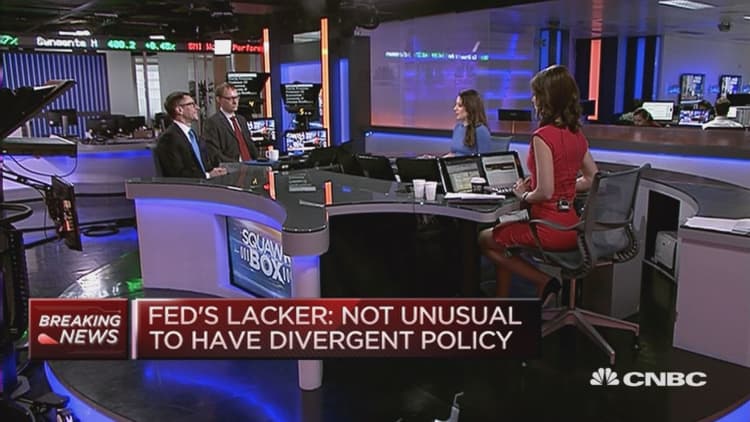Negative interest rates may seem an unlikely course of action for the U.S. Federal Reserve, but former Fed governor Randy Kroszner told CNBC Monday that he wouldn't rule out the possibility after experiencing the financial crash.
Kroszner said that it would take a "significant negative shock that led to a threat of significant deflation" for the Fed to consider negative rates — a policy tool which has already been deployed by the likes of Japan, Switzerland, and the European Central Bank (ECB).
"I don't see that as a likely outcome, but I never say never after what I experienced in 2006 to 2009," Kroszner said.
"I don't think any of us sitting around the table back at the end of 2008 thought that we'd be in 2015, 2016 (and) that we'd be debating the first (interest rate) increase and then whether we could move beyond that," he added.
Krozner's comments come after former Fed chairman Ben Bernanke released a blog post last week, saying that while negative rates weren't likely, their implementation could deliver "modest benefits and manageable costs."
It's something that economists have thought about for a very long time…(but) in practice, it's been very rare. That's the thing that's the issue," Kroszner explained.
"We're trying to see whether there are unintended consequences. So far there (doesn't seem) to be major negative ones but this is still very early in this experiment."
That experiment seems to be gaining ground in Europe, though, with Denmark's central bank becoming one of the first to adopt negative deposit rates in July 2012 at negative 0.2 percent. It has since pushed rates to minus 0.65 percent , in a bid to spur further bank lending and boost the country's economic recovery.
Switzerland has set its own deposit rate at negative 0.75 percent, while Sweden has pushed its key interest rate to negative 0.5 percent. Most recently, the European Central Bank stopped short of a dip below zero on its main refinancing rate but slashed its deposit rate to minus 0.4 percent.

Over in Asia, Japan took markets by surprise in January by cutting deposit rates on excess reserves to negative 0.1 percent.
While the list of negative rate adopters seems to be growing, Robin Bew, CEO of the Economist Intelligence Unit, said the circumstances are different for a large country like the U.S.
"These countries which are running negative interest rates at the moment they look very different from the U.S. because they're relatively small and therefore they can be swamped very easily by international capital flows that put the central bank under tremendous amounts of pressure," he told CNBC on Monday.
"The U.S is a huge and liquid market so it's very unlikely that international capital flows would of themselves put the U.S. in a position where the Fed had to take very aggressive action."


